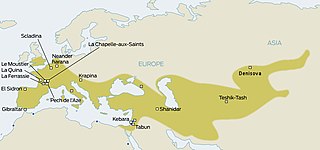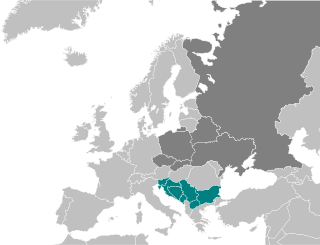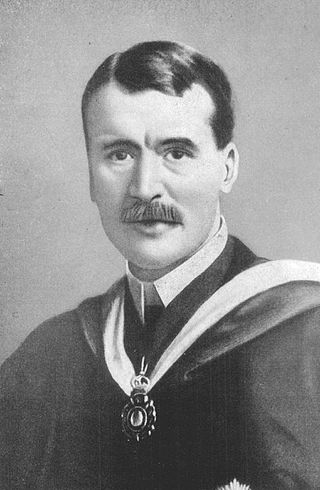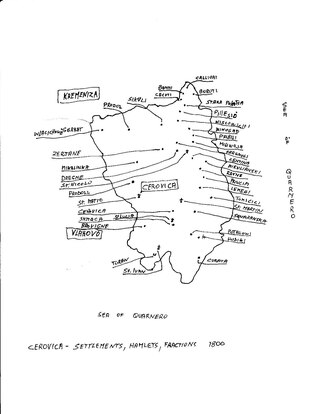
Anthropology is the scientific study of humanity, concerned with human behavior, human biology, cultures, societies, and linguistics, in both the present and past, including past human species. Social anthropology studies patterns of behavior, while cultural anthropology studies cultural meaning, including norms and values. A portmanteau term sociocultural anthropology is commonly used today. Linguistic anthropology studies how language influences social life. Biological or physical anthropology studies the biological development of humans.

A village is a clustered human settlement or community, larger than a hamlet but smaller than a town, with a population typically ranging from a few hundred to a few thousand. Although villages are often located in rural areas, the term urban village is also applied to certain urban neighborhoods. Villages are normally permanent, with fixed dwellings; however, transient villages can occur. Further, the dwellings of a village are fairly close to one another, not scattered broadly over the landscape, as a dispersed settlement.
The Istro-Romanian language is an Eastern Romance language, spoken in a few villages and hamlets in the peninsula of Istria in Croatia, as well as in the diaspora of this people. It is sometimes abbreviated to IR.

The Borough of Chorley is a local government district with borough status in Lancashire, England. It covers the towns Adlington and Chorley. The borough also extends to several villages and hamlets including Buckshaw Village, Croston, Eccleston, Euxton and Whittle-le-Woods.

The Mousterian is an archaeological industry of stone tools, associated primarily with the Neanderthals in Europe, and to the earliest anatomically modern humans in North Africa and West Asia. The Mousterian largely defines the latter part of the Middle Paleolithic, the middle of the West Eurasian Old Stone Age. It lasted roughly from 160,000 to 40,000 BP. If its predecessor, known as Levallois or Levallois-Mousterian, is included, the range is extended to as early as c. 300,000–200,000 BP. The main following period is the Aurignacian of Homo sapiens.

Job Charnock was an English administrator with the East India Company. He is commonly regarded as the founder of the city of Calcutta ; however, this view is challenged, and in 2003 the Calcutta High Court declared that he ought not to be regarded as the founder. There may have been inhabitants in the area since the first century CE. The High Court was right in claiming that villages that constituted colonial Calcutta were not established by Charnock or the British Raj itself, but Charnock’s ambition-driven doggedness toward setting up a East Indian Company frontier along the Eastern border of India that he could control on his own terms played a huge role in the creation of present day city of Calcutta.

East London is the northeastern part of London, England, east of the ancient City of London and north of the River Thames as it begins to widen. East London developed as London's docklands and the primary industrial centre. The expansion of railways in the 19th century encouraged the eastward expansion of the East End of London and a proliferation of new suburbs. The industrial lands of East London are today an area of regeneration, which are well advanced in places such as Canary Wharf and ongoing elsewhere.

Kolkata (Calcutta) was a colonial city. The British East India Company developed Calcutta as a city by establishing an artificial riverine port in the 18th century CE. Kolkata was the capital of the British India until 1911, when the capital was relocated to Delhi. Kolkata grew rapidly in the 19th century to become the second most important city of the British Empire after London and was declared as the financial (commercial) capital of the British India. This was accompanied by the development of a culture that fused Indian philosophies with European tradition.

South Slavs are Slavic people who speak South Slavic languages and inhabit a contiguous region of Southeast Europe comprising the eastern Alps and the Balkan Peninsula. Geographically separated from the West Slavs and East Slavs by Austria, Hungary, Romania, and the Black Sea, the South Slavs today include Bosniaks, Bulgarians, Croats, Macedonians, Montenegrins, Serbs and Slovenes.

Charnock Richard is a small village and civil parish in the borough of Chorley, Lancashire, in England. The population of the civil parish taken at the 2011 census was 1,748.

A stateless society is a society that is not governed by a state. In stateless societies, there is little concentration of authority; most positions of authority that do exist are very limited in power and are generally not permanently-held positions; and social bodies that resolve disputes through predefined rules tend to be small. Different stateless societies feature highly variable economic systems and cultural practices.

Sir Thomas Henry Holland was a British geologist who worked in India with the Geological Survey of India, serving as its director from 1903 to 1910. He later worked as an educational administrator at Edinburgh University.

Heath Charnock is a small village and civil parish of the Borough of Chorley in Lancashire, England. According to the United Kingdom Census 2001 it has a population of 2,065, reducing to 2,026 at the 2011 Census.

The Church of St Wilfrid is in Market Place, Standish, Wigan, Greater Manchester, England. It is an active Anglican parish church in the Diocese of Blackburn. It is recorded in the National Heritage List for England as a designated Grade I listed building. The authors of the Buildings of England series describe it as "one of the most interesting churches in Lancashire".

Brovinje Italian: Brovigne is a small settlement/hamlet, in Istria County in Croatia, with a little more than 50 houses in 1950. It is located in the Labinština peninsula of Istria County, Croatia. Overlooking the Gulf of Kvarner in the northern Adriatic Sea including the island of Croatian: Cres, Italian: Cherso. It is located 13 km south-east of Labin and 3 km north of Koromačno/Valmazzinghi. The first written record with the name Brovinje is recorded in the old St. Lucia church books on birth, marriages and deaths in 1705 which are held in Pazin, Istria. Brovinje is a hamlet which is under the Raša municipality.
Charnock Richard is a civil parish in the Borough of Chorley, Lancashire, England. The parish contains 12 buildings that are recorded in the National Heritage List for England as designated listed buildings. Of these, two are listed at Grade II*, the middle grade, and the others are at Grade II, the lowest grade. Apart from the village of Charnock Richard, the parish is rural. Most of the listed buildings are, or originated as, farmhouses and farm buildings. The other listed buildings consist of a church, a bridge, a school and schoolmaster's house, and almshouses with associated buildings.
Heath Charnock is a civil parish in the Borough of Chorley, Lancashire, England. The parish contains 18 buildings that are recorded in the National Heritage List for England as designated listed buildings. Of these, one is listed at Grade II*, the middle grade, and the others are at Grade II, the lowest grade. The parish is mainly rural, and most of the listed buildings are houses and associated structures, farmhouses and farm buildings. The Leeds and Liverpool Canal passes through the parish, and there are five listed buildings connected with this, four bridges and an aqueduct. The other listed structure is a milepost.

The township Croatian: Cerovica / Italian: Cerovizza is bordered on the east by the sea of Quarnero from S.Martino to Brovinje; to the North by the Township Chermenizza; and to the East by the Township Croatian: Vlakovo, Istria. The head hamlet of the Township of Cerovica was Croatian: Skitača Italian: Schitazza which is located approximately 4 km north-east of Brovinje. In the hamlet of Skitača is the chapel of Saint Lucy of Albona which became a parish church for all of the Township of Cerovica. The small chapel was built in 1616 and became a Parish in 1632. The last time it was renovated was in the 1990s.
The Robin Brook is a small stream originating in the south eastern part of the City of Sheffield in South Yorkshire, England. The source of the stream is in the Charnock area of the city, where it flows south, crossing the border into Derbyshire. It meets The Moss at Ford.















